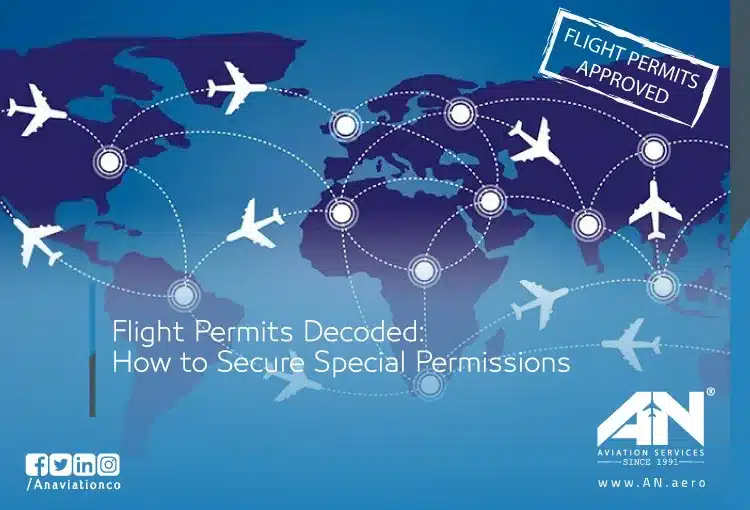
Navigating the aviation industry requires adherence to a wide range of regulations, one of the most crucial being the requirement for flight permits. Whether for commercial operations, ferry flights, or emergency situations, permits ensure legal compliance while maintaining safety standards. Securing these permissions involves understanding various procedures overseen by civil aviation authorities (CAA) and aligning them with specific operational needs. Let’s decode flight permits and uncover the steps to obtain special permissions.
What Are Flight Permits?
A flight permit is an official authorization granted by a country’s civil aviation authority, allowing an aircraft to operate within or over its airspace. These permits serve as legal documents that validate an aircraft’s compliance with regulatory requirements such as airworthiness, operational intent, and route legality. Without them, flight operations could face legal penalties or even grounding.
Permits are typically required for:
- Commercial operations: Passenger and cargo flights.
- Special operations: Medical airlifts or VIP transport.
- Non-scheduled flights: Ferry flights or repositioning.
Each permit is tailored to the specific nature of the flight and aircraft type, ensuring that safety and regulatory standards are upheld.
Types of Flight Permits
1- Special Flight Permits:
These are issued when an aircraft doesn’t meet the full airworthiness requirements but can operate safely under specific conditions. For instance, a flight to relocate an aircraft for repairs might need this permit.
2- Overflight Permits:
These allow an aircraft to pass through a country’s airspace without landing. Countries often have unique airspace regulations, making these overflight permits essential for international routes.
3- Landing Permits:
For flights planning to land in a foreign country, landing permits are mandatory. They ensure compliance with local aviation laws, airfield capacities, and other operational constraints.
4- Emergency Permits:
In urgent situations, such as medical evacuations, emergency permits are expedited to allow immediate flight operations. These are critical in life-or-death scenarios.
5- Test or Ferry Permits:
Issued for aircraft undergoing maintenance or testing, these permits enable non-revenue flights to assess airworthiness or relocate an aircraft.
How to Obtain a Flight Permit?
Acquiring flight permits involves several coordinated steps to ensure all documentation aligns with regulatory requirements. Here’s how the process unfolds:
Application Submission:
Operators must submit a permit application to the relevant civil aviation authority (CAA). This includes detailed flight information such as:
- Aircraft type and registration.
- Purpose of the flight.
- Route and intended airspace use.
- Compliance with Requirements
A key element in securing permits is ensuring the aircraft meets operational and safety regulations. This typically requires submitting:
- An airworthiness certificate to verify that the aircraft is fit for flight.
- Proof of compliance with international aviation standards (e.g., ICAO).
Navigation and Landing Fees:
Many flight permits come with associated costs, such as navigation fees for overflight or landing charges. Operators must account for these expenses during their planning.
Coordination with Authorities:
Collaboration with local air traffic control and airport authorities ensures that flight operations proceed without disruptions. This may involve:
- Confirming slot availability at the destination.
- Adhering to noise or environmental regulations.
Approval Timeline:
Depending on the permit type, approvals can take anywhere from 24 hours to several days. Emergency permits, however, are processed on an expedited basis to address time-sensitive needs.
Key Roles in the Permit Process
Civil Aviation Authorities (CAA):
The CAA of each country plays a pivotal role in granting permissions. They review applications to ensure safety and compliance with local and international standards.
Airlines and Operators:
It’s the responsibility of the airline or operator to provide accurate information, complete the application process, and manage all associated fees.
Air Traffic Controllers:
Once a permit is issued, air traffic controllers oversee flight movements, ensuring safe navigation through approved airspace and coordination with other flights.
Why Are Flight Permits Essential?
Flight permits do more than just grant legal authorization; they ensure:
- Safety: By verifying airworthiness and route compliance, permits reduce operational risks.
- Airspace Management: Permits help regulate air traffic, avoiding congestion and maintaining efficiency.
- Environmental Compliance: Many permits require adherence to noise regulations and emission standards.
- Global Coordination: They streamline international operations, ensuring flights comply with varying regional laws.
Without flight permits, the aviation industry would face disorganization, increased risks, and possible violations of international law.
Challenges in the Permit Process
Securing flight permits can sometimes be complex due to:
- Regulatory Differences: Each country has its unique requirements, making international operations intricate.
- Tight Timelines: Emergency permits or last-minute schedule changes require swift coordination.
- Complex Documentation: A single missing detail can delay approvals, leading to disruptions.
Efficient coordination and understanding local regulations are crucial to overcoming these challenges.
Simplifying the Process
For operators seeking to streamline the permit application process, leveraging expertise can make a significant difference. Third-party flight support services often specialize in handling:
- Navigation of regulatory frameworks.
- Communication with multiple aviation authorities.
- Timely submission of complete documentation.
Their role ensures that permits are secured efficiently, allowing operators to focus on flight operations without unnecessary delays.
Conclusion: Navigating the Skies Legally
Flight permits are a cornerstone of aviation operations, ensuring safety, compliance, and efficiency in air travel. From overflight and landing permissions to emergency clearances, understanding the permit process is essential for seamless operations. By working closely with civil aviation authorities, staying compliant with regulations, and planning proactively, operators can navigate the complexities of flight permits with confidence.
The next time you see a plane soaring through the sky, remember that behind every smooth flight lies a network of approvals and processes ensuring safety and order in the air.

